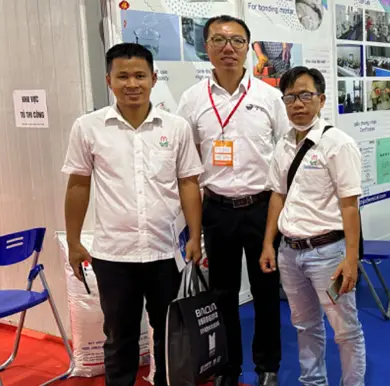
ئۆكتەبىر . 21, 2024 06:32 Back to list
High-Performance Tile Adhesive with HPMC for Optimal Bonding Solutions
Understanding the Role of HPMC in Tile Adhesives
Tile adhesives are crucial in the construction industry, providing a reliable means to bond tiles to various surfaces. One of the key components that enhance the performance of these adhesives is Hydroxypropyl Methylcellulose (HPMC). This article explores the significance of HPMC in tile adhesives, its properties, and the impact it has on the overall performance of tiling systems.
What is HPMC?
Hydroxypropyl Methylcellulose (HPMC) is a cellulose ether derived from natural cellulose, which is modified to produce a white to off-white powder. This non-ionic polymer is soluble in water, forming a transparent and viscous solution. HPMC is widely used in various applications, including pharmaceuticals, food products, and construction materials, due to its unique properties.
Functions of HPMC in Tile Adhesives
1. Water Retention One of the primary functions of HPMC in tile adhesives is its excellent water-retention capability. When mixed with water, HPMC creates a gel-like consistency that helps to retain moisture within the adhesive. This is critical during the curing process, as it prevents the adhesive from drying too quickly. A slow-drying adhesive allows for better bonding with the tile and substrate.
2. Improved Workability HPMC enhances the workability of tile adhesives, making them easier to spread and apply. The improved viscosity and consistency of the adhesive allow for better handling during installation, ensuring a smoother application process. As a result, tiles can be laid more accurately, reducing the risk of errors and uneven surfaces.
3. Increased Adhesion The presence of HPMC significantly increases the adhesive's bonding strength. This is particularly important in environments subjected to temperature fluctuations and moisture, where tiles are at risk of detachment. HPMC helps the adhesive to form a stronger bond with both the tile and the substrate, ensuring that the tiles remain securely in place.
tile adhesive hpmc

4. Flexibility Tile installations are often subject to various stresses and movements, which can lead to cracks or dislodgment if the adhesive is too rigid. HPMC adds a degree of flexibility to tile adhesives, allowing them to accommodate slight movements in the substrate or tiles without compromising the bond. This is particularly beneficial in areas prone to expansion and contraction due to temperature or moisture changes.
5. Resistance to Shrinkage When tile adhesives cure, they can shrink, leading to potential bonding failures. HPMC helps to mitigate this issue by providing a more stable matrix, reducing the likelihood of shrinkage cracks. This property is crucial for maintaining a long-lasting bond and the overall integrity of the tiled surface.
Types of Tile Adhesives with HPMC
Tile adhesives formulated with HPMC can vary depending on their intended use. For example, standard thin-set mortars, such as those used for regular wall and floor tiles, frequently incorporate HPMC to improve performance. In contrast, specialized adhesives for large format tiles or external applications may use modified formulations of HPMC to cater to specific bonding requirements.
Environmental Considerations
As the construction industry increasingly moves towards sustainability, the use of HPMC in tile adhesives aligns with this trend. HPMC is considered environmentally friendly, as it is derived from renewable resources and does not emit harmful volatile organic compounds (VOCs) during application. This makes HPMC-modified tile adhesives a suitable choice for green building projects.
Conclusion
HPMC plays a pivotal role in enhancing the performance of tile adhesives, contributing to their water retention, workability, adhesion, and flexibility. As the demand for high-quality tiling systems continues to grow, the use of HPMC in tile adhesives will remain a vital aspect of construction chemistry. By understanding the benefits and functions of HPMC, manufacturers and builders can ensure that tile installations are durable, reliable, and aesthetically pleasing. In an ever-evolving industry, the incorporation of innovative additives like HPMC will continue to shape the future of construction materials.
-
Versatile Hpmc Uses in Different Industries
NewsJun.19,2025
-
Redispersible Powder's Role in Enhancing Durability of Construction Products
NewsJun.19,2025
-
Hydroxyethyl Cellulose Applications Driving Green Industrial Processes
NewsJun.19,2025
-
Exploring Different Redispersible Polymer Powder
NewsJun.19,2025
-
Choosing the Right Mortar Bonding Agent
NewsJun.19,2025
-
Applications and Significance of China Hpmc in Modern Industries
NewsJun.19,2025







